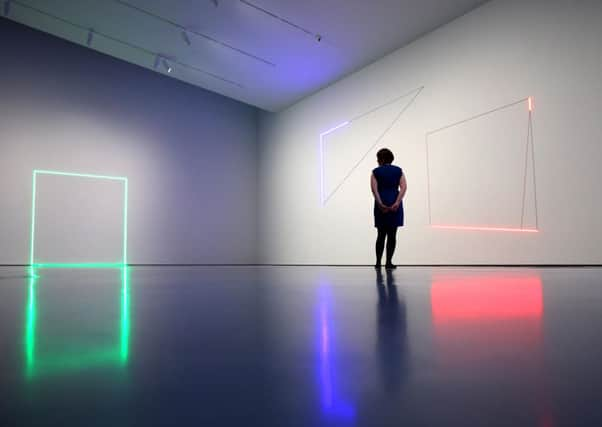Let there be light,sound and prize-winning flights of imagination…


There’s none of the brashness of Damien Hirst nor the opinionated self-assurance of David Hockney, two county counterparts of the Sheffield-raised 35-year-old, but beneath the almost diffident exterior there evidently burns a creative flame which might one day elevate him to similarly-feted heights.
Mirza’s latest exhibition has just opened at The Hepworth Wakefield and, like many of his installations, it uses sound and light in respose to the form, contents and surroundings of the building in which they are set.
Advertisement
Hide AdAdvertisement
Hide AdHe explained: “This is something I do when I work with institutions that have a very particular background, history or location.
“I was actually invited to work with The Hepworth three or four years ago, before it even opened, and one of the things I was keen to do was to work with the collection in some way.”
For one half of the two-part piece Water, Electricity, Reflection, he has taken a selection of items from the permanent collection, plus a curved chrome sheet from the recent Alice Channer show, and created a surreal hall of mirrors effect, partly bathed in green light.
“It looks like a very simple thing and quite minimal, but there’s a lot going on there,” he said. “She actually made that work in response to a drawing I’d given her, based on the idea of a sound wave getting louder and louder.”
Advertisement
Hide AdAdvertisement
Hide AdThe setting of the gallery itself also provided material for Mirza to build upon, both visually and aurally.
“One of the main things about The Hepworth is its location, with the river and Chantry Chapel so I’ve made use of an image of the chapel. I like the painting, it’s a very well executed image of the chapel and you see the weir as well.”
The weir plays a pivotal role in the other part of Water, Electricity, Reflection, with one of the galleries filled with the live sound of the water rushing over the cascade.
“One of the things I’m interested in independent of this place is the sound of water. In effect it’s white noise and white noise is something people dislike – but the sound of water is seen as a good thing.
Advertisement
Hide AdAdvertisement
Hide Ad“So I’m looking at the idea of what beauty is, in sound as well as in visual terms.”
Mirza was also struck by the architecture of the building itself, the corners and angles both inside and out, which he has replicated using strips of coloured lights and wire on the walls of the gallery in which the sound installation is located.
Although Mirza started to appear on the art world’s radar from the late ‘noughties’, it was winning the Northern Art Prize in 2011 which propelled him into the spotlight where he currently basks.
“It was a big boost to me personally because it gave me a lot of confidence,” he recalled. “It made me feel like an artist for the first time – up to then I’d just been an unemployed guy making stuff!
Advertisement
Hide AdAdvertisement
Hide Ad“Looking back, since that moment I’ve had several opportunities to show work in the north: Liverpool, Manchester, Middlesbrough, Leeds and now here.
“You don’t immediately realise the benefits of it but it’s been a kind of anchor point for me and it gives curators some confidence, some validation, in what I do.”
Though now based in London, Mirza says this is mainly for the ease of travel given his increasingly internationally-focused career. “I didn’t need to be in London to be accepted as an artist or to find outlets for my work,” he said.
“In terms of making work, the north is better. I’d like to think I’ll be able to come back here one day.”